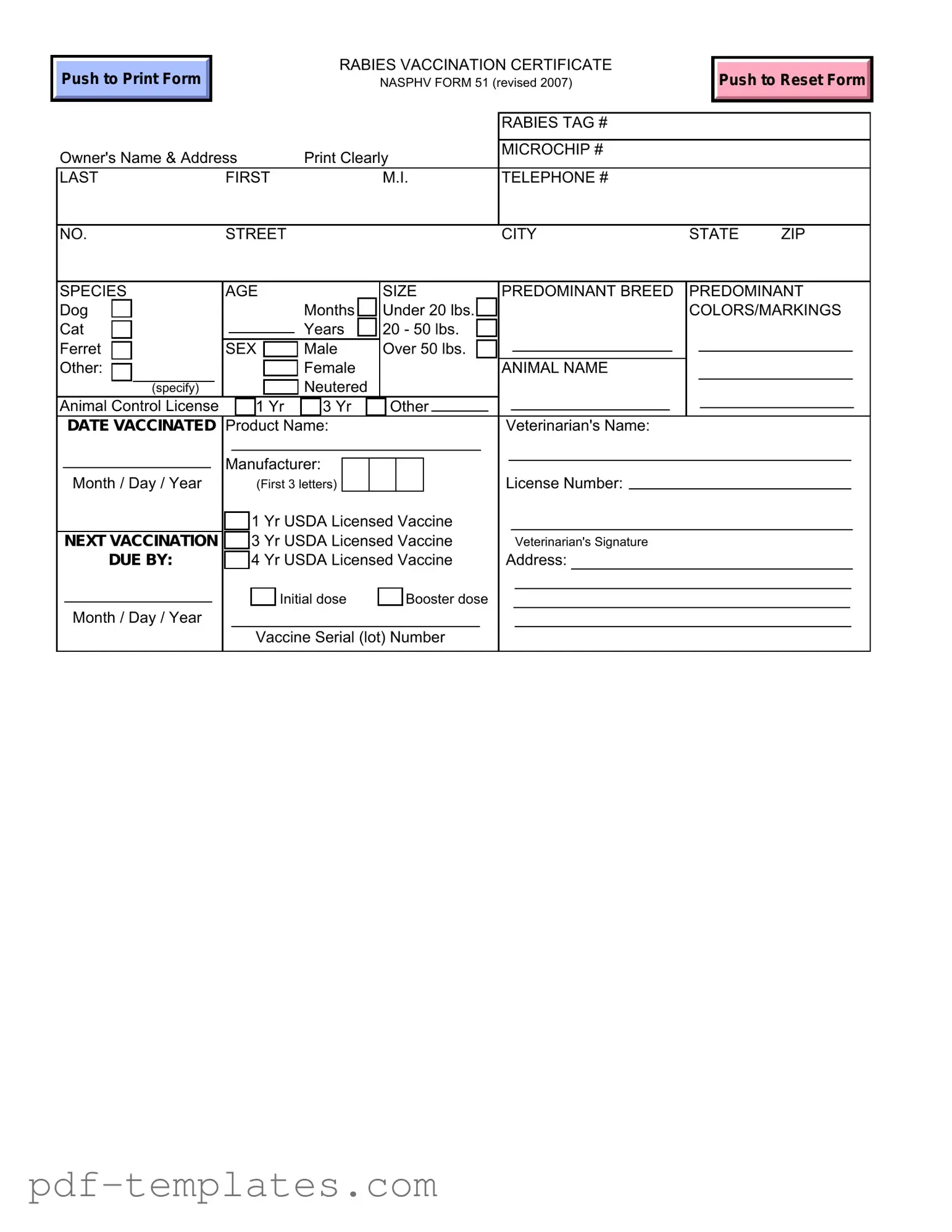The Pet Health Certificate is a document that serves a similar purpose to the Rabies Certificate. It provides proof of a pet's health status, particularly when traveling or relocating. This certificate typically includes information about the pet's vaccinations, health examinations, and any treatments received. Like the Rabies Certificate, it requires details about the pet's owner, species, and vaccination history, ensuring that pet owners have a reliable record of their animal's health for various situations.
The Certificate of Vaccination is another document that shares similarities with the Rabies Certificate. This certificate specifically focuses on the vaccinations a pet has received, including rabies. It often includes the date of vaccination, the vaccine used, and the veterinarian's information. Both documents aim to provide a clear record of immunizations, which can be crucial for public health and safety, especially in areas where rabies is a concern.
The Animal Health Record is akin to the Rabies Certificate in that it documents a pet's overall health history. This record may encompass various health-related information, including vaccinations, medical treatments, and routine check-ups. While the Rabies Certificate is focused solely on rabies vaccination, the Animal Health Record offers a more comprehensive view of a pet's health, making it a valuable tool for pet owners and veterinarians alike.
The Microchip Registration form is also similar in that it provides essential identification for pets. While it does not directly relate to vaccinations, it plays a critical role in pet safety and recovery. Both documents require detailed information about the pet and its owner. The microchip registration ensures that a lost pet can be quickly identified and returned to its owner, much like how the Rabies Certificate helps establish a pet's vaccination status for health and safety reasons.
The Health Certificate for Travel is yet another document that resembles the Rabies Certificate. This certificate is often required when pets are traveling across state lines or internationally. It confirms that the pet is in good health and up-to-date on vaccinations, including rabies. Both certificates serve to protect public health and ensure that pets are healthy enough to travel, providing peace of mind for pet owners.
To ensure a seamless transaction when buying or selling a recreational vehicle in Texas, it's important to have a proper record, such as the Texas RV Bill of Sale. This document, pivotal for both parties involved, outlines crucial details about the ownership transfer and can be found at https://documentonline.org/blank-texas-rv-bill-of-sale/, helping to safeguard the interests of both the seller and buyer.
Lastly, the Veterinary Examination Report bears similarities to the Rabies Certificate in that it documents a pet's health assessment by a veterinarian. This report may include findings from a physical examination, vaccination history, and recommendations for care. While the Rabies Certificate focuses specifically on rabies vaccinations, the Veterinary Examination Report provides a broader overview of a pet's health status, reinforcing the importance of regular veterinary visits for overall well-being.
